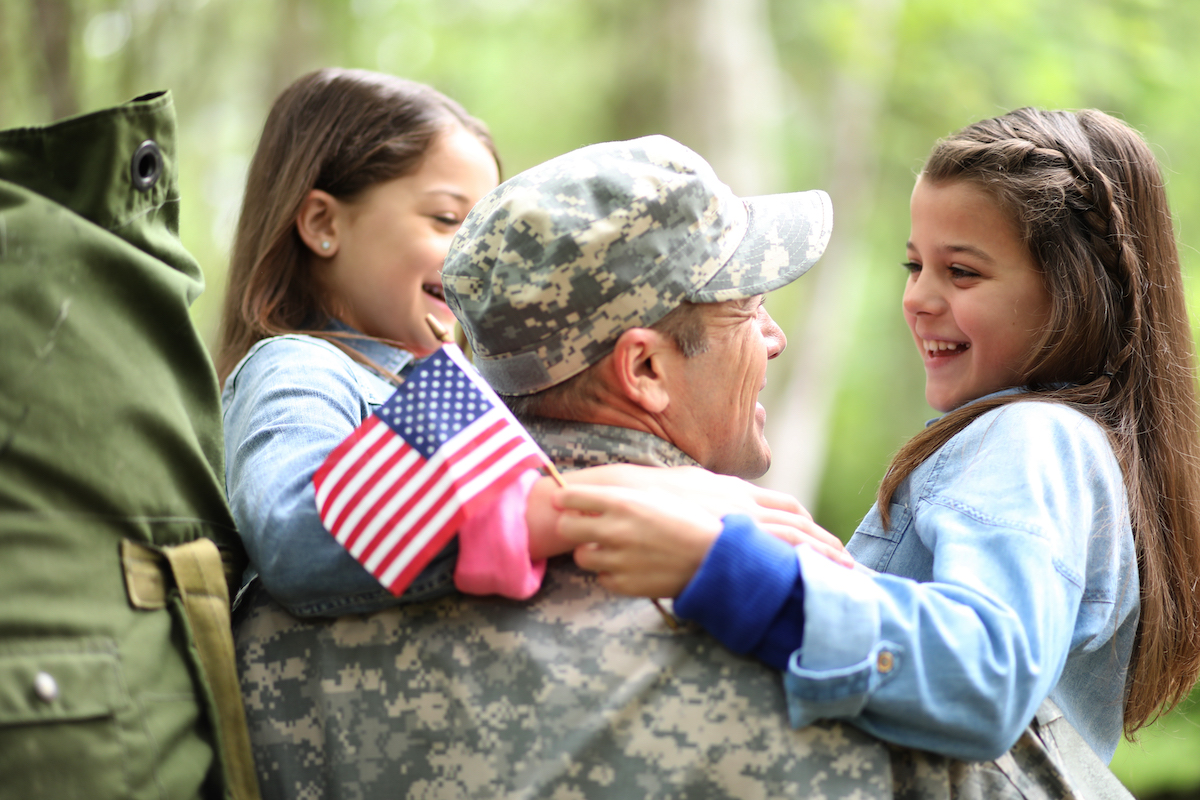VA Lung Cancer Assistance
The Department of Veterans Affairs (commonly referred to as the VA) is responsible for managing the benefits of all qualifying veterans in the United States. Almost a million veterans today are at risk for developing lung cancer. In many cases, vets with lung cancer are eligible for VA-provided health care, disability, and financial benefits.

VA Lung Cancer Assistance for Veterans
Due to a range of social and work-related factors, U.S. veterans have a higher risk of developing lung cancers. Older veterans are 24% to 38% more likely to receive a lung cancer diagnosis than those in the general population. As such, securing benefits and improving lung cancer assistance is a key goal of the Department of Veterans Affairs (VA). Being deployed increases veterans’ risk of smoking by 50%.
A common misconception for lung cancer is that the disease is only caused by smoking tobacco cigarettes. On the contrary, military veterans may develop lung cancers (including mesotheliomas) from environmental sources (such as pollution) and service-connected exposure (such as exposure to asbestos or diesel exhaust).
The VA has over 1,200 medical centers providing care (from surgery and critical care to mental health services). Also, VA community-based outpatient clinics and local health care provides may provide healthcare to some rural veterans unable to travel far for treatment.
Find a National Cancer Institute-designated treatment center using their treatment provider map.
Lung Cancer Rates for Veterans
In the U.S., cancer is the second leading cause of death (behind heart disease). Among cancers, lung cancer is the most common cause of death. Lung cancer causes about 22% of U.S. deaths each year (or 135,700 people). In 2021, about 228,000 American men and women were diagnosed with some form of lung cancer.
Compared to civilians, prior military service members have more than double the risk of developing lung cancer. Moreover, the five-year cancer survival rate among veterans is considered “extremely poor” at 20%. In other words, 20% of veterans who were lung cancer patients survived five years or more after their cancer diagnosis. Annually, about 7,700 vets are diagnosed with lung cancer in the VA health care system.
Those who served in the military (even nonsmokers) have a significantly higher risk of service-connected lung cancers due to chemical exposures. Asbestos, radon, Agent Orange, and other chemical solvents involved in military work are generally known carcinogens (or cancer-causing chemicals).
Types of VA Lung Cancer Assistance
The VA offers several types of assistance for veterans with lung cancer or other service-related cancers. To improve the lives of men and women living with cancer, the VA formed a National Oncology Program Office.
Among the Oncology Office’s responsibilities is the PHASER Program. The program tests patients’ blood against 30 commonly used medications. According to VA surveys, half of the patients will need one of the 30 treatments. Testing tells doctors how well the patient’s body responds to a given treatment, appropriate doses. The VA keeps a record of patient results and uses them to reduce potential side effects from treatment.
Generally, men and women with an honorable discharge from the U.S. military qualify for a few types of support from the VA. Veterans with lung cancer can benefit from assistance such as VA-provided:
- Dependency and indemnity compensation (DIC) – payments for surviving family members
- Disability compensation – monthly payments based on the veteran’s disability rating
- Geriatric care – special health services specifically intended for seniors
- Health screenings – early cancer screenings for cancers of the breast, lung, prostate, and more
- Home health care – home health aides, assisted living, and hospice care resources are available for qualifying individuals
- Home telehealth – call into VA doctors and specialists via online video conferencing
- Palliative care – Pain relief is an integral part of cancer treatment and is available through VA hospitals and health centers
- Transportation and lodging – VA assistance for travel and lodging (when you need to travel away from home for treatment) is available
VA Lung Cancer Disability Compensation
Disability compensation is the primary form of cash assistance for prior service members with lung cancer. Many veterans qualify for medical services from the VA health care system. Disability compensation, however, provides additional monthly payments for lung cancer assistance.
Disability compensation amounts vary depending on the vet’s disability rating (in increments of 10 up to 100%). Typically, multiple injuries or illnesses qualify an individual for a higher, combined disability rating.
Conditions eligible for disability compensation include:
- Anxiety or depression
- Breathing problems from an existing lung condition or respiratory disease
- Cancers caused by exposure to toxic chemicals
- Chronic back pain that leads to an existing back disability
- Loss of range of motion (trouble moving around)
- Posttraumatic stress disorder (PTSD)
- Scar tissue
- Severe hearing loss
- Stomach ulcers
- Traumatic brain injury (TBI)
Lung Cancer Disability Ratings
For asbestos-caused cancers like mesothelioma, disability is usually rated at 100%. Mesothelioma is an aggressive type of cancer that often impairs the patient’s ability to continue life as they had before.
“In my era, Agent Orange was a given. If you served a day in Vietnam and you got lung cancer, it was [presumed to be related to Agent Orange]. But it took 20 years to get there.” – Navy Veteran Jim Pantelas, patient advocate and 15-year lung cancer survivor
Similarly, active cases of lung cancer receive a 100% disability rating. Additionally, for about six months after treatment, lung cancer is rated at 100% disabling by the VA.
Following a six-month period after the end of treatments like chemotherapy, surgery, or other therapy, the VA normally requires a Compensation and Pension (C&P) exam from the veteran to continue lung cancer assistance.
If the VA determines a patient’s lung cancer has improved (normally in cases of remission), his or her disability rating may be lowered. Alternatively, if a patient’s cancer returns, the VA can increase disability ratings up to 100%.
Early Screening Assistance
A survey by the VA identified a gap between veterans’ views of early cancer screenings and their benefits. Many seniors believed cancer screenings were meant to prevent cancer. The goal of lung cancer early testing is to catch tumors before they have a chance to grow and spread.
Today, about 900,000 veterans live with a risk of developing lung cancer.
Subsequently, the VA partnered with the GO2 Foundation for lung cancer. The partnership will expand the types of assistance available to patients receiving lung cancer treatment through the VA health system.
For patients and families, the GO2 helps patients find treatment centers closer to home as well as several other resources, including:
- Clinical trial assistance
- Educational materials
- Financial, legal, and employment resources
- HelpLine & Support
- Talk with lung cancer survivors
